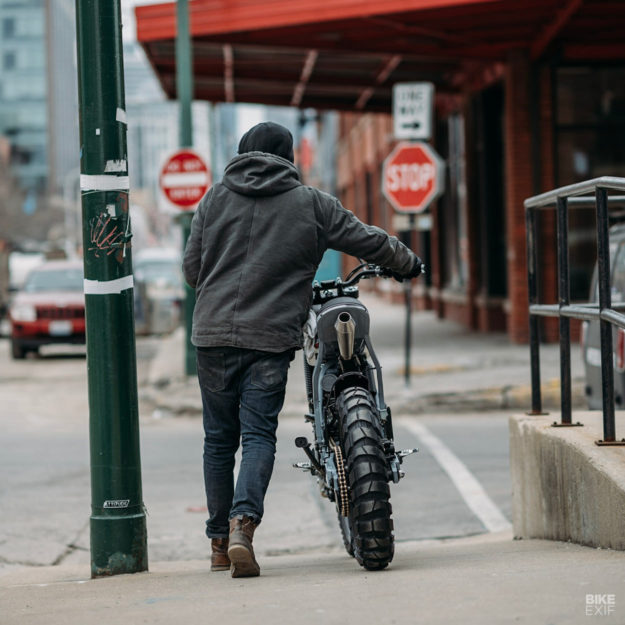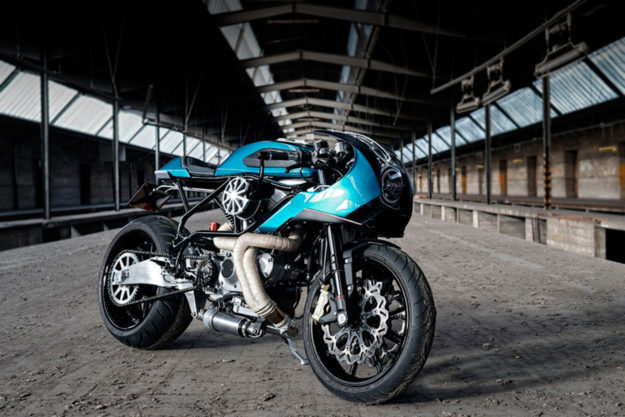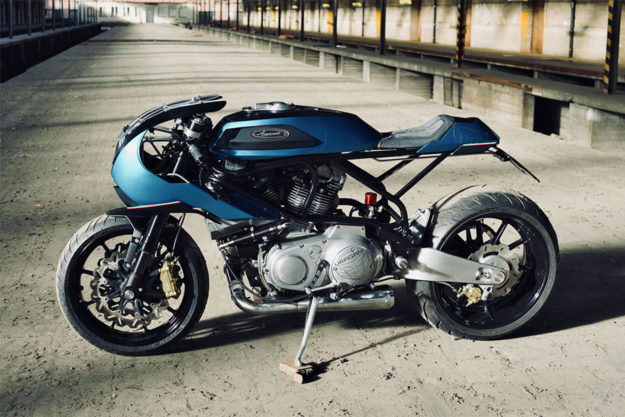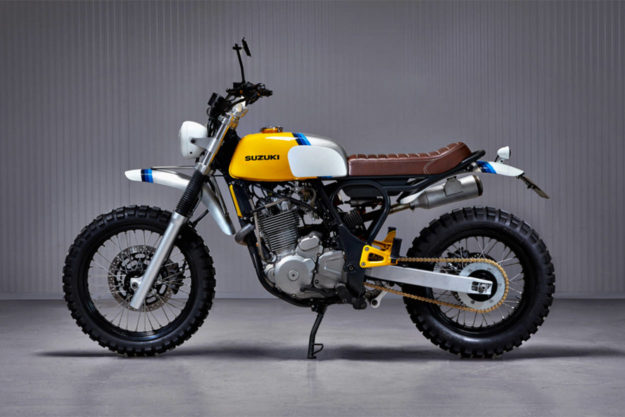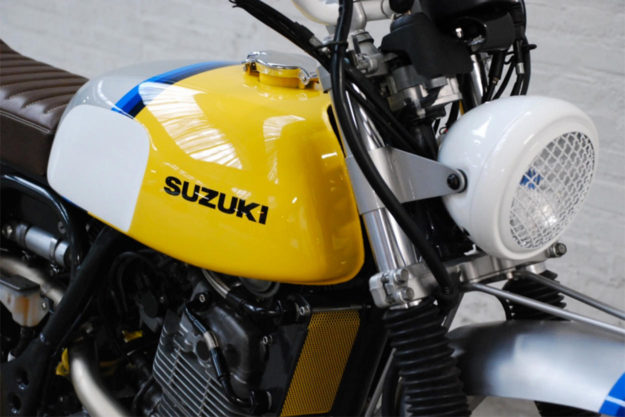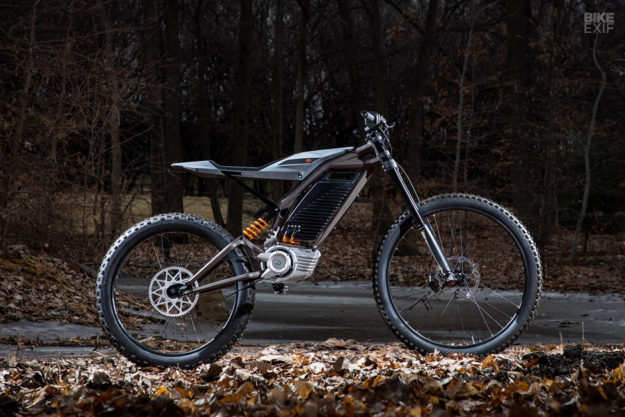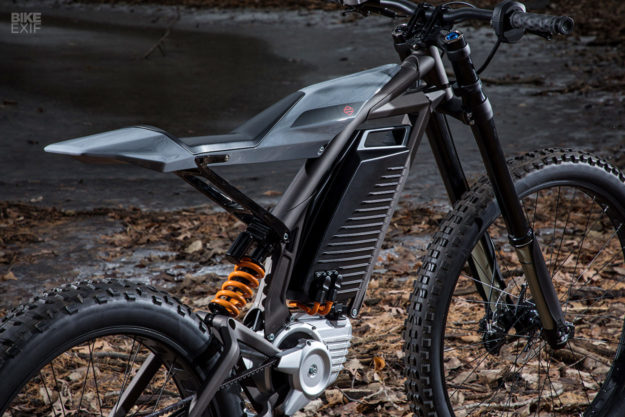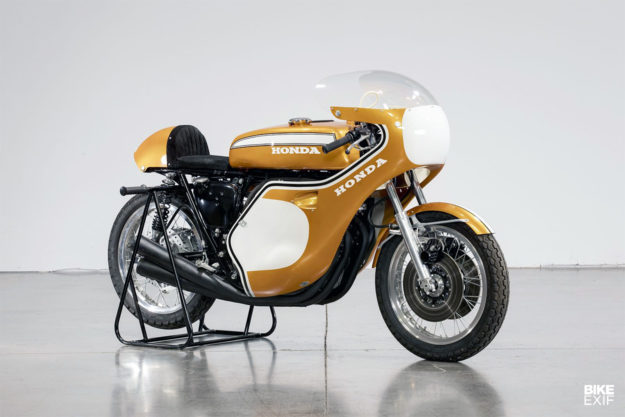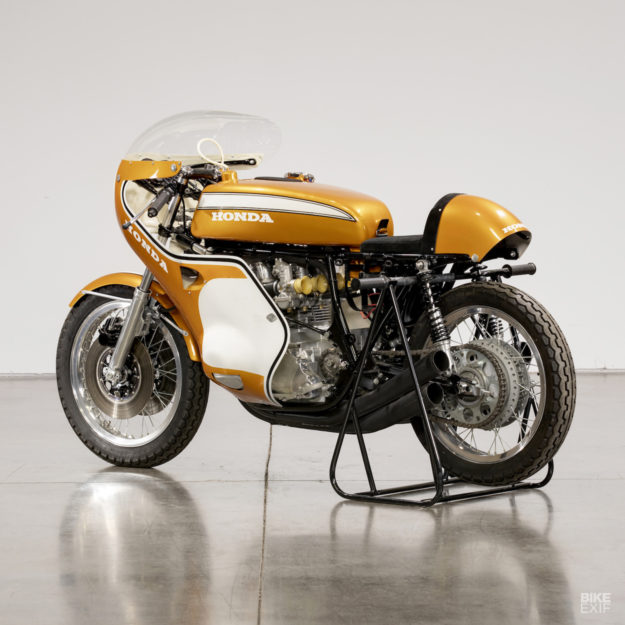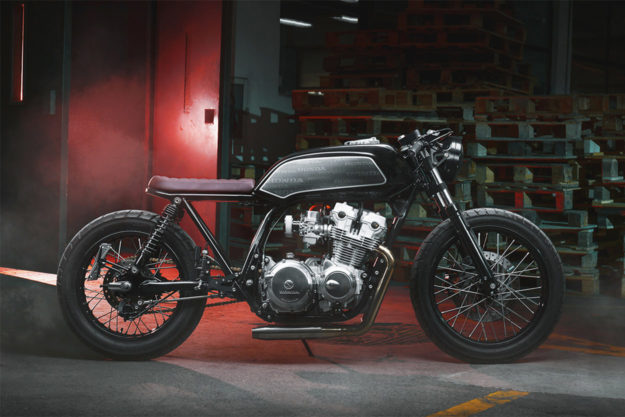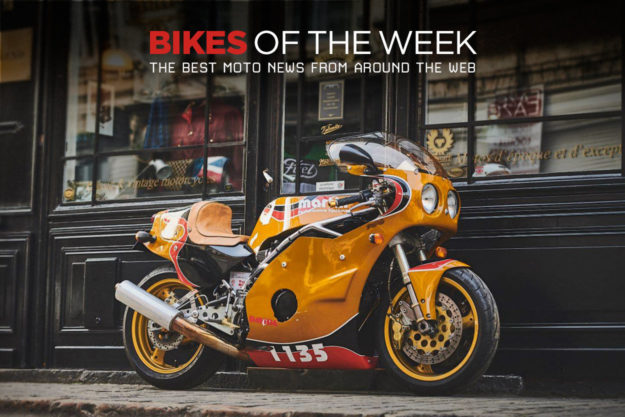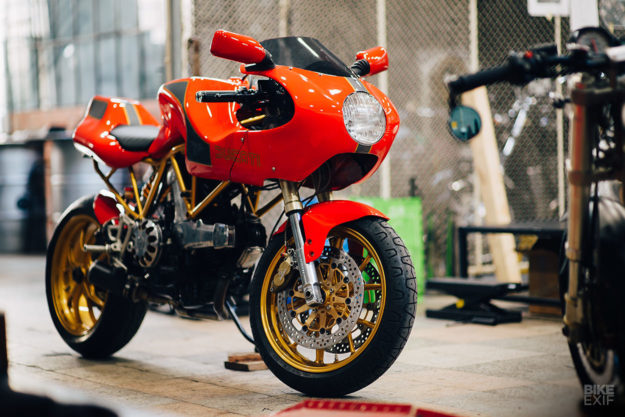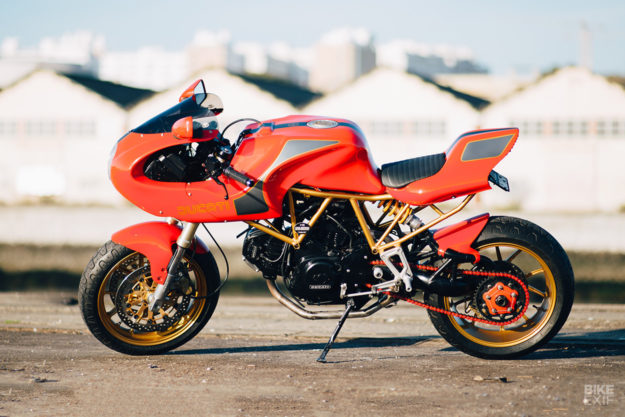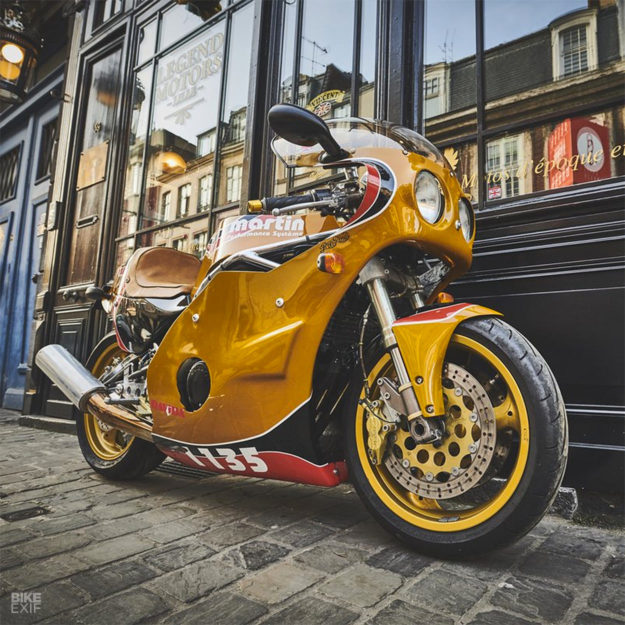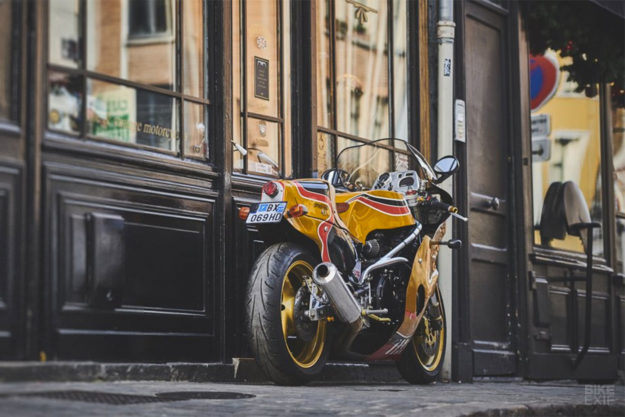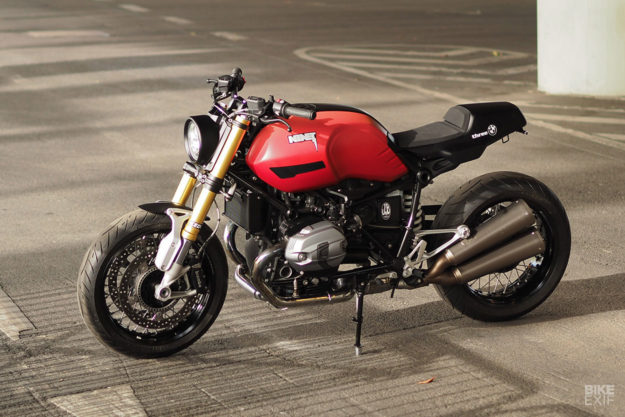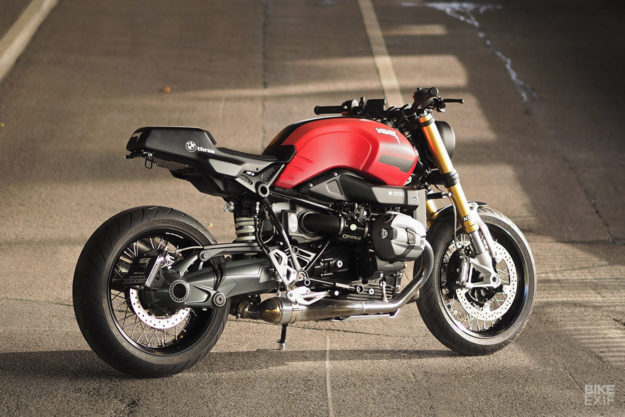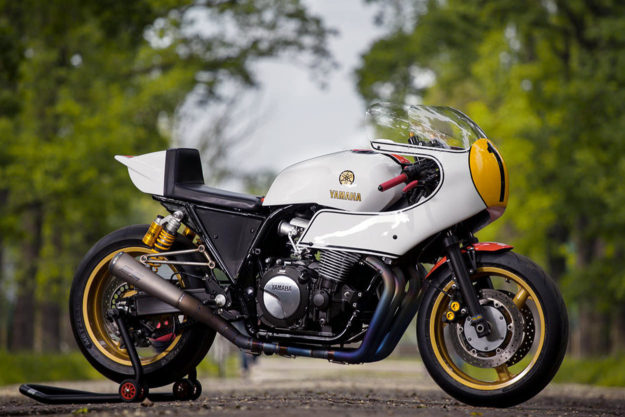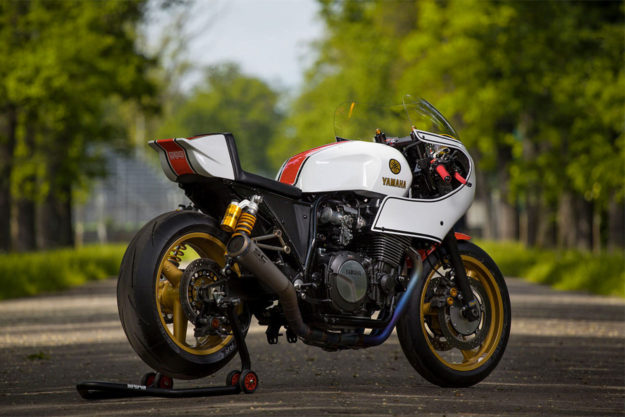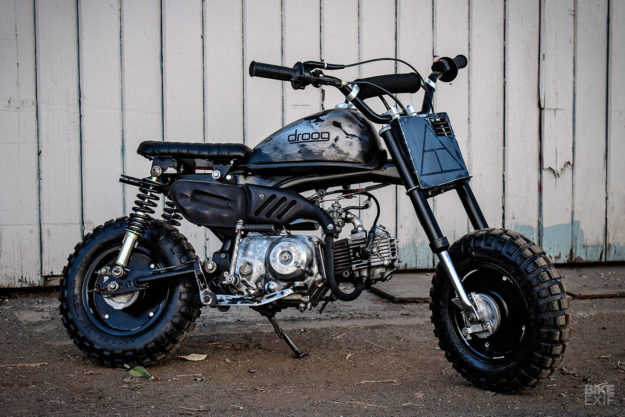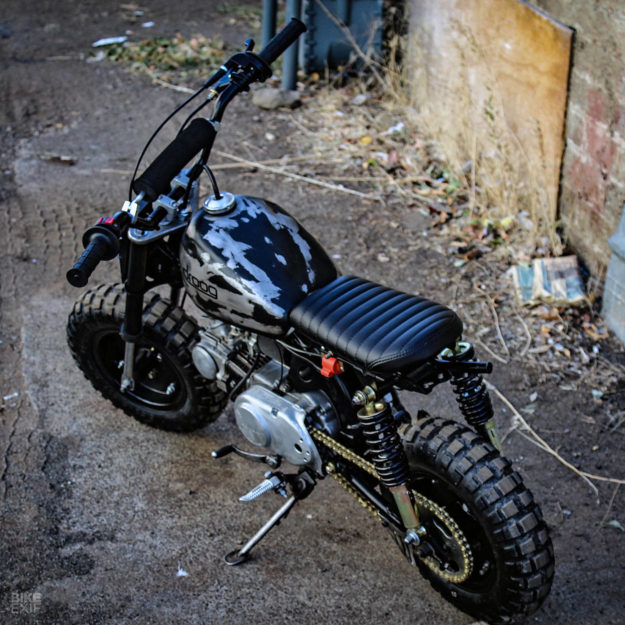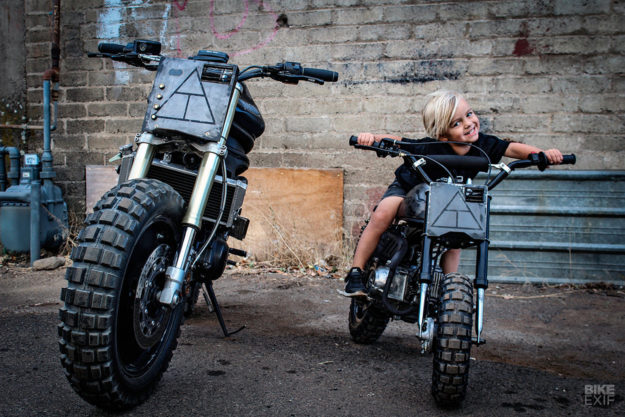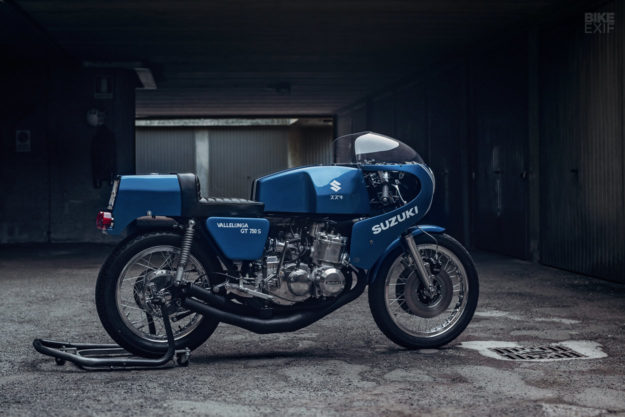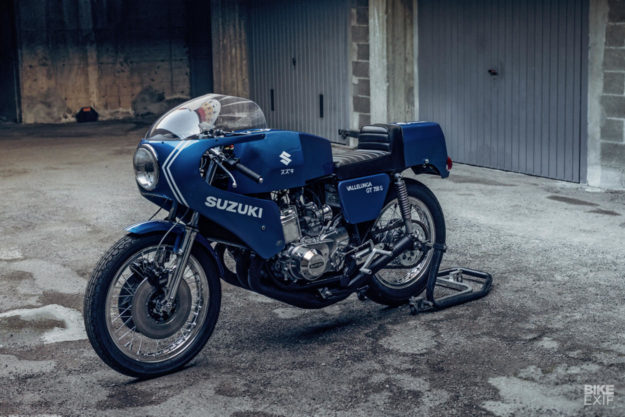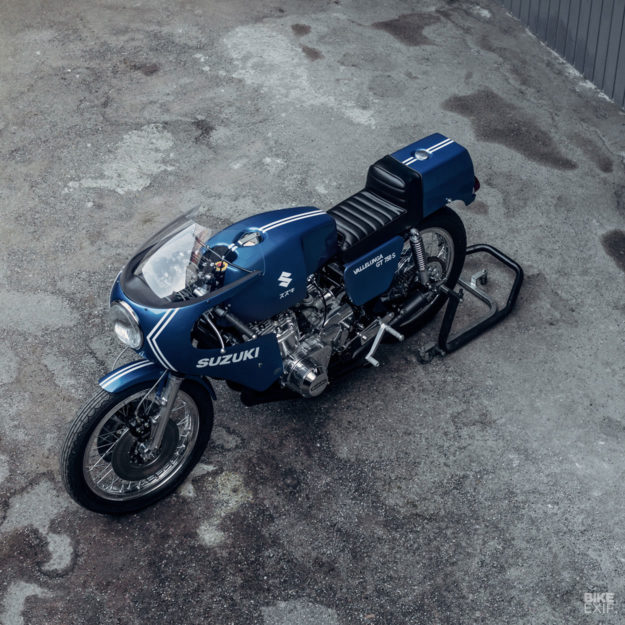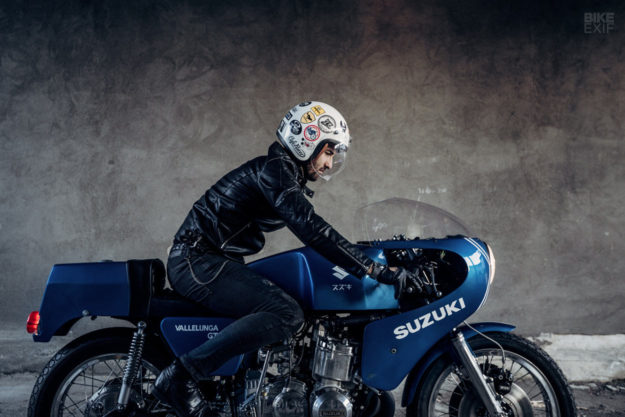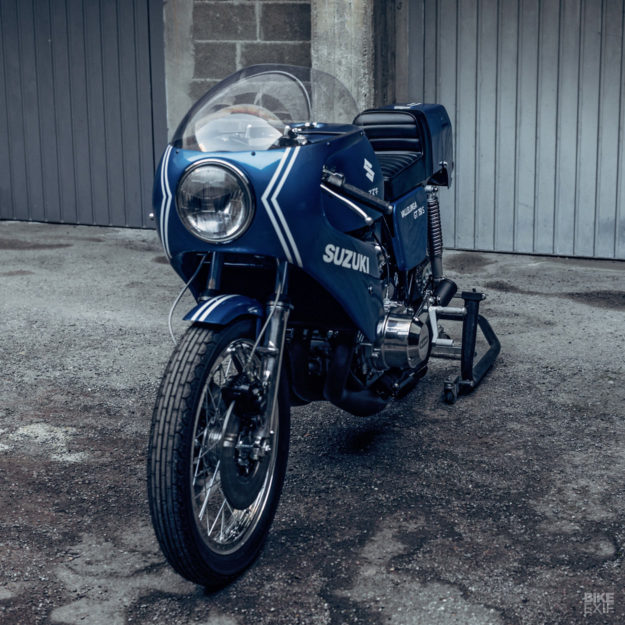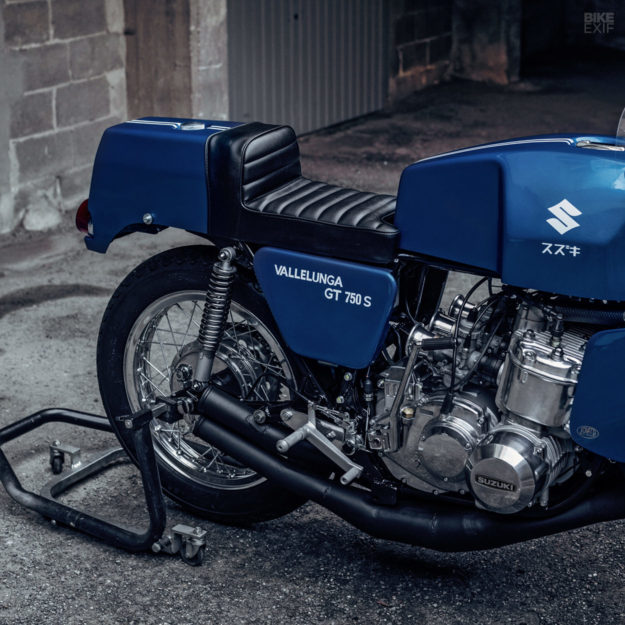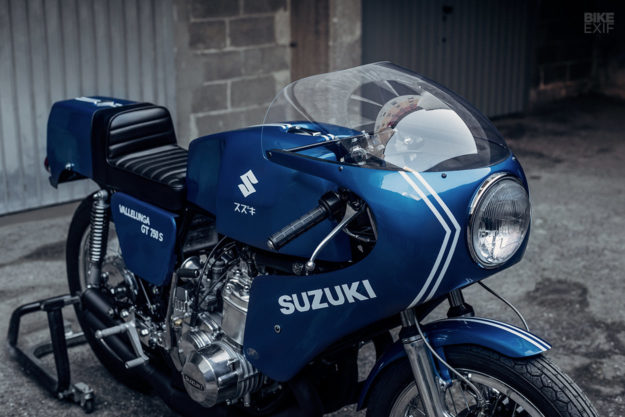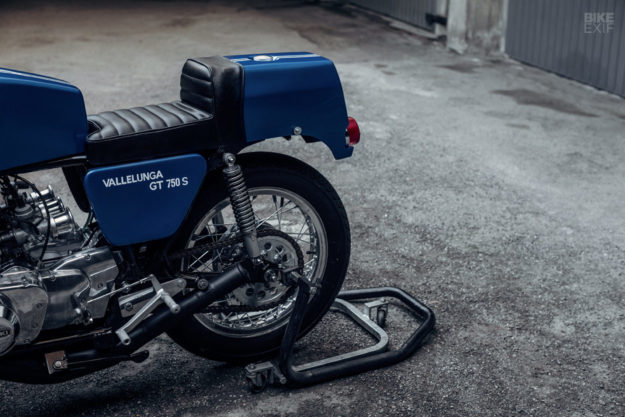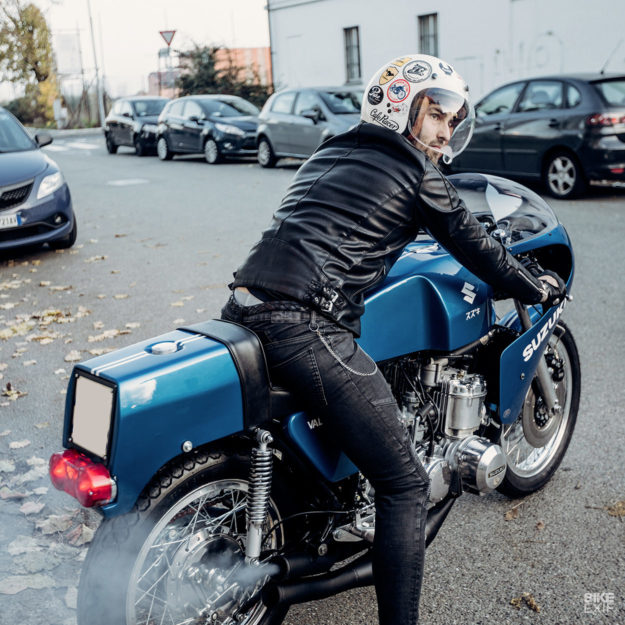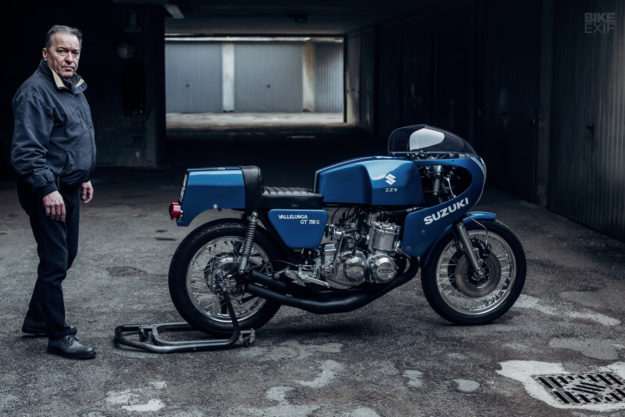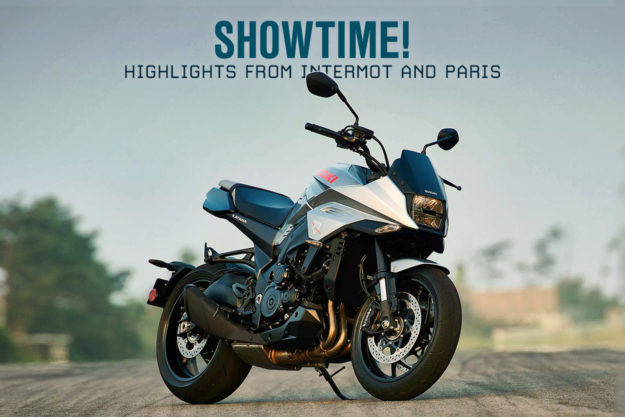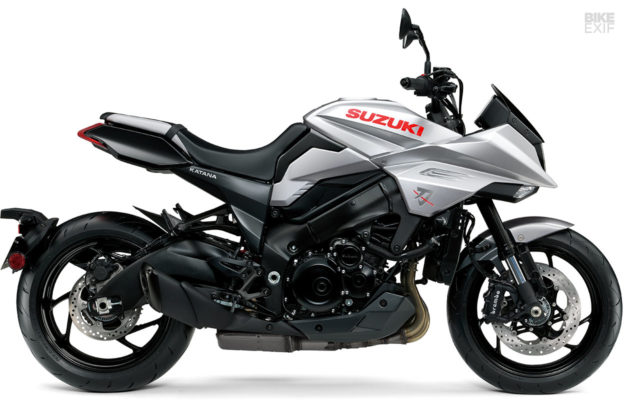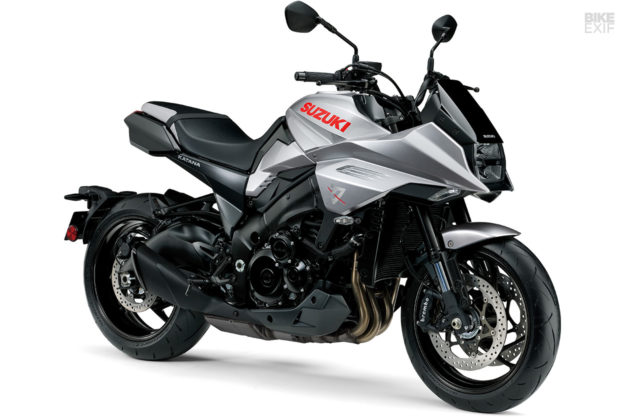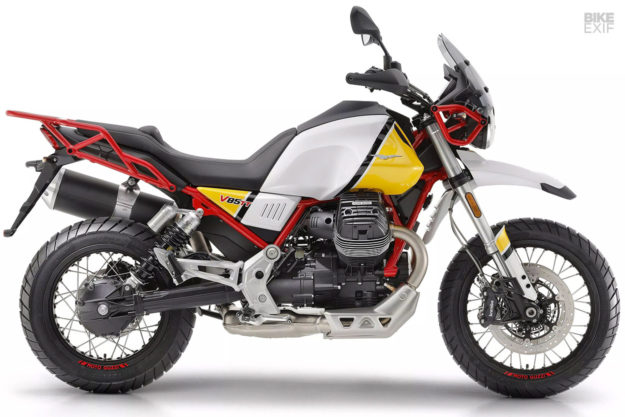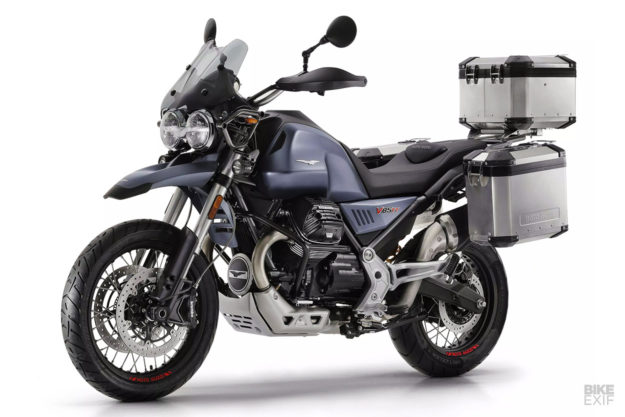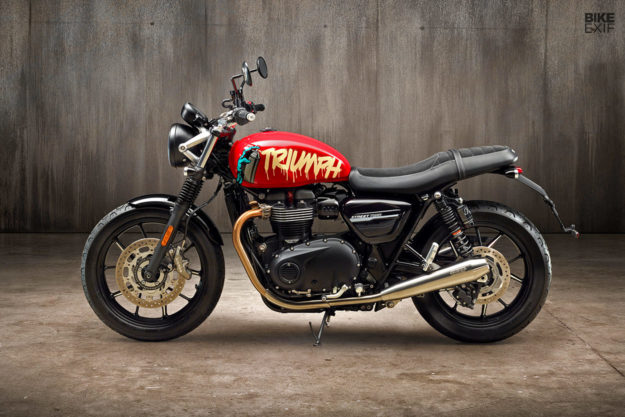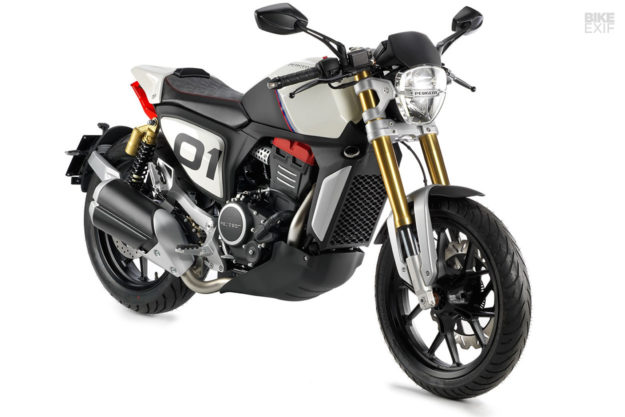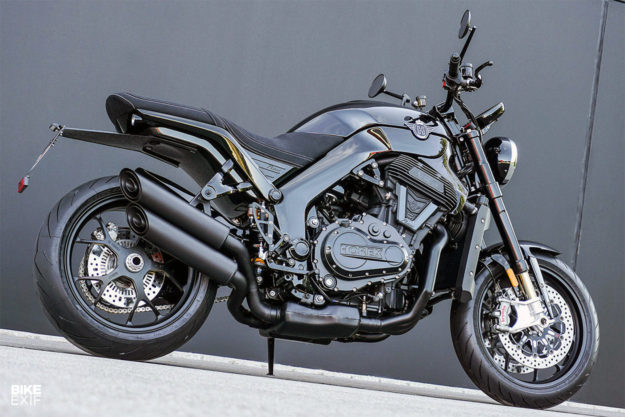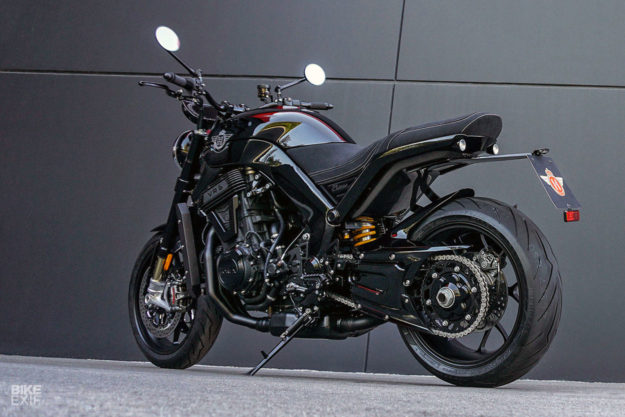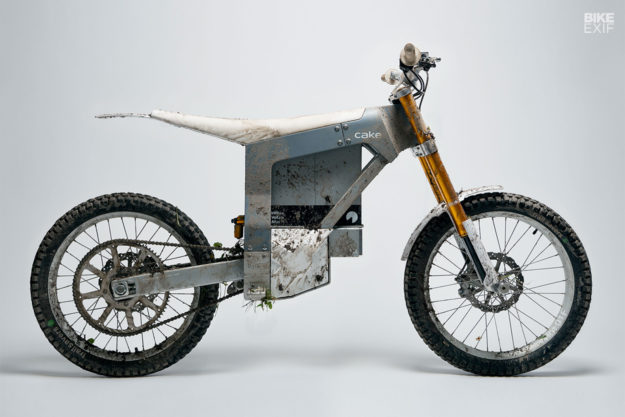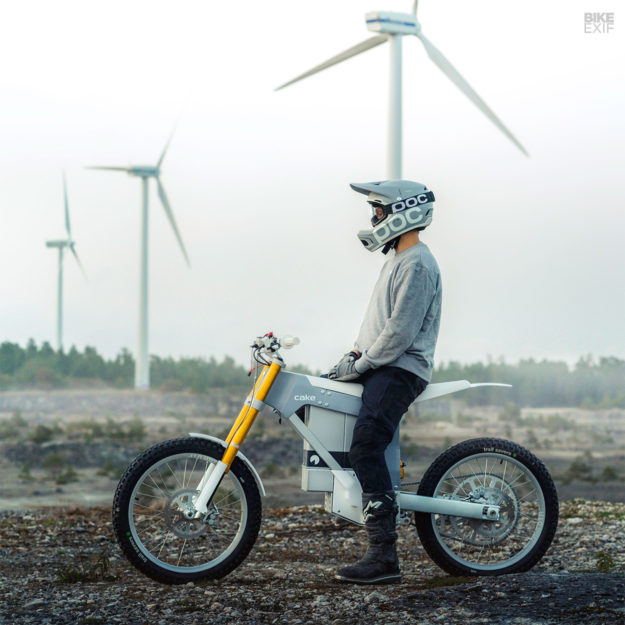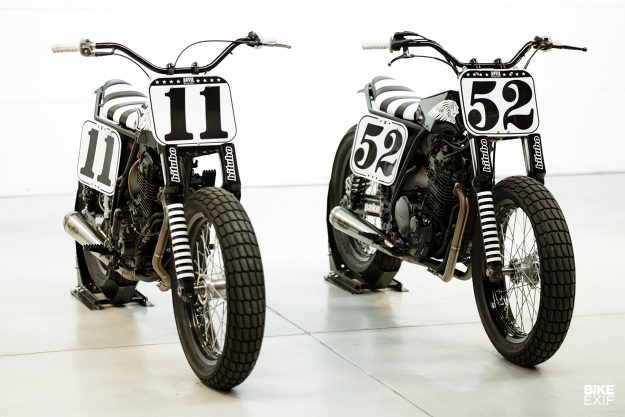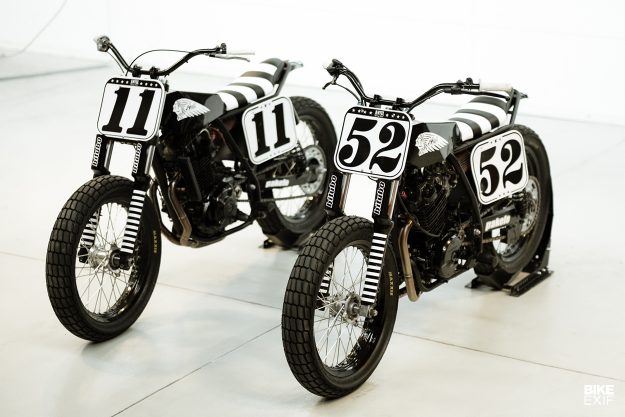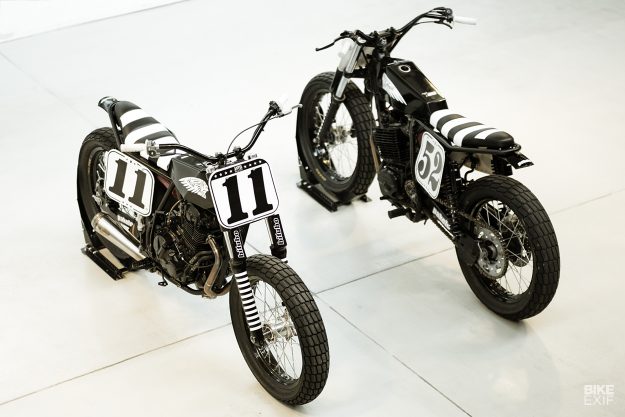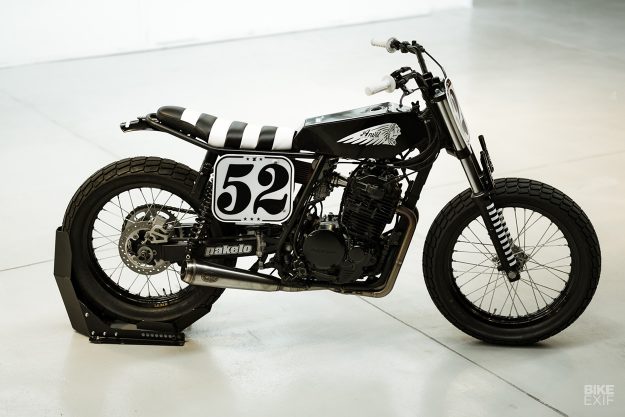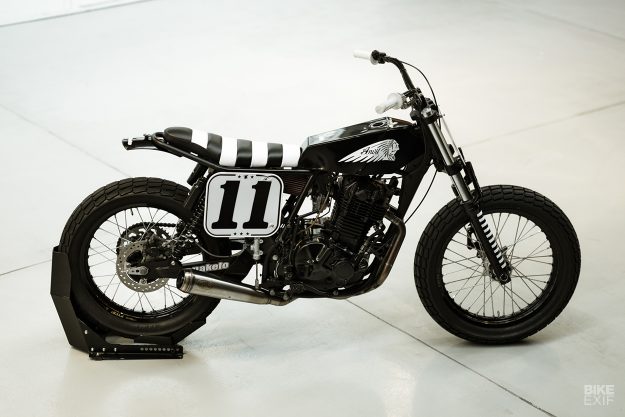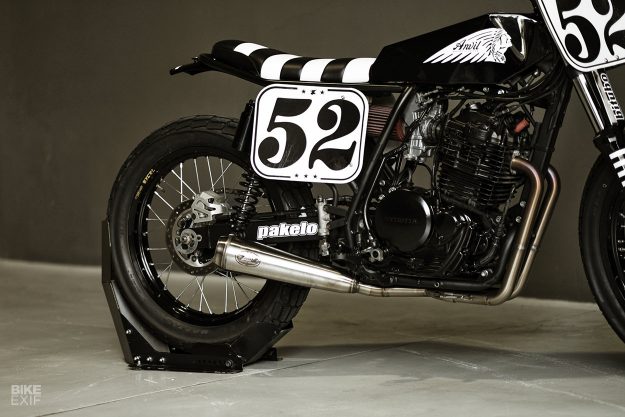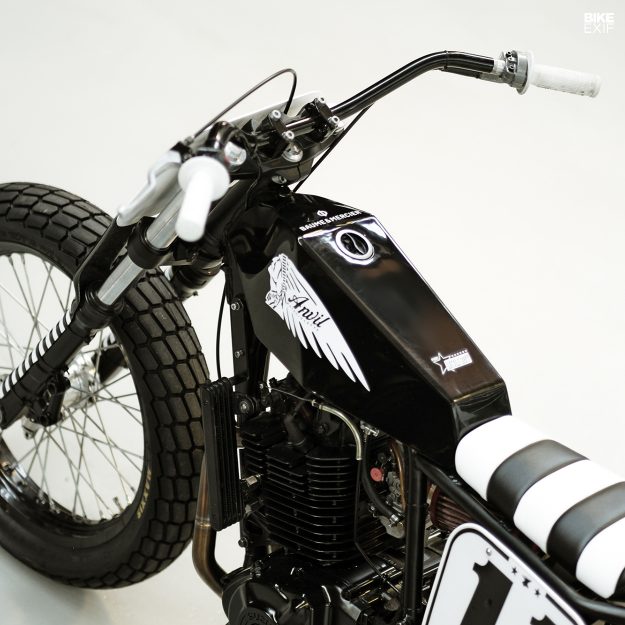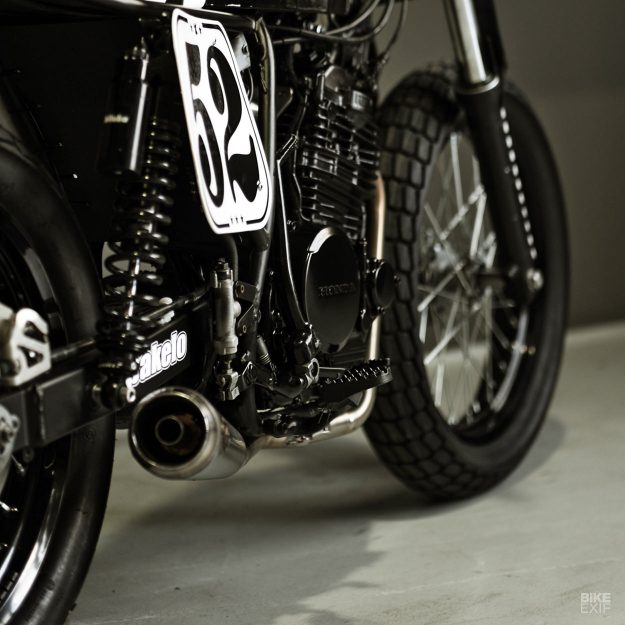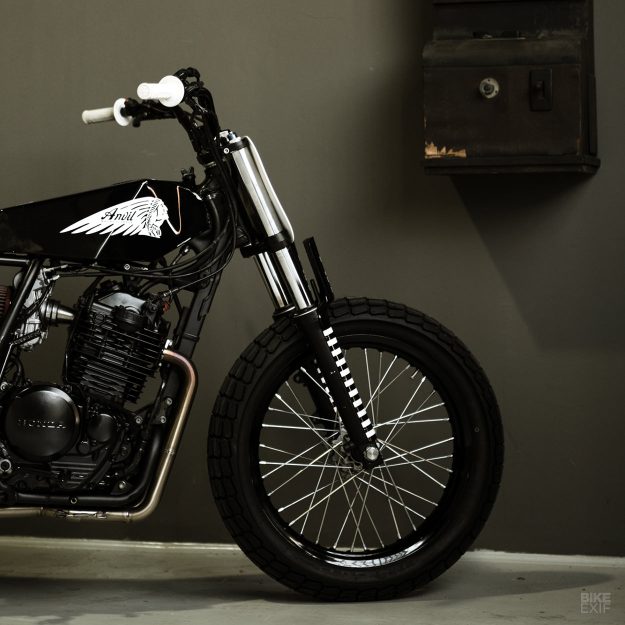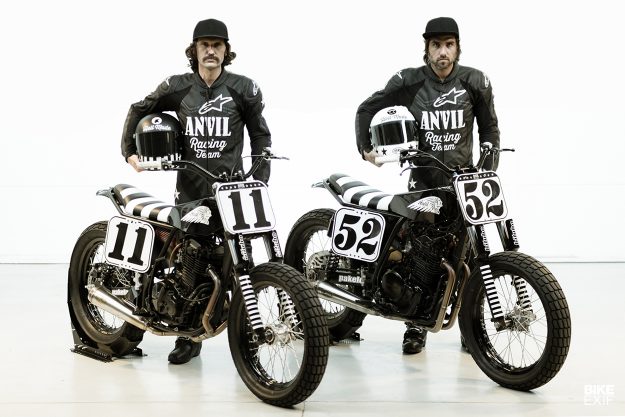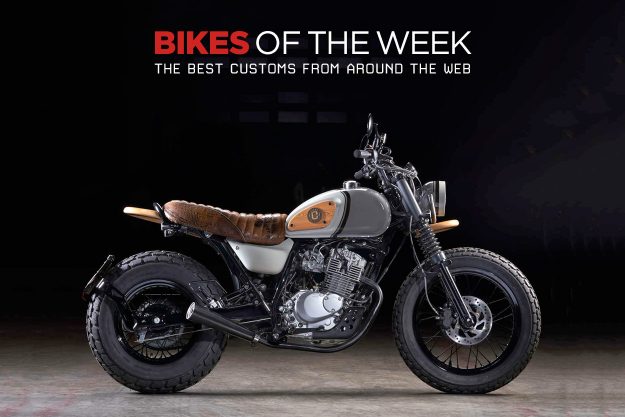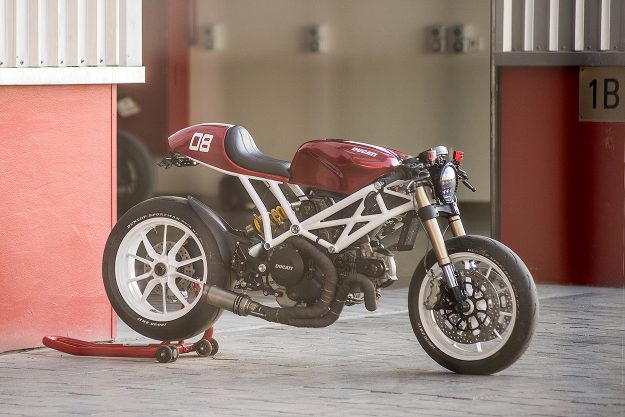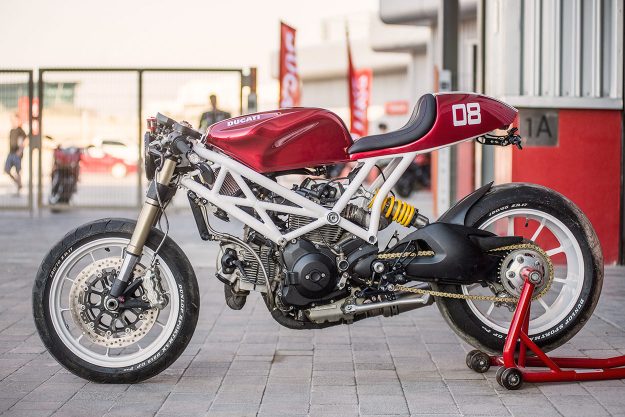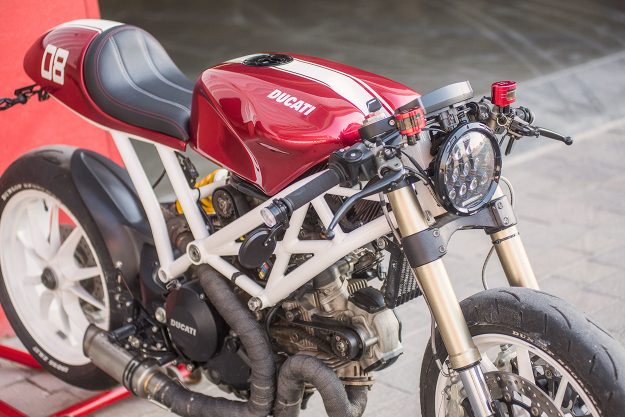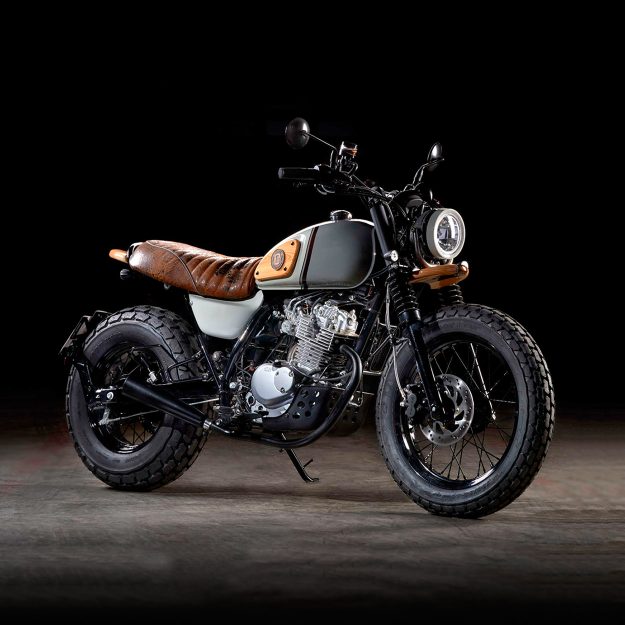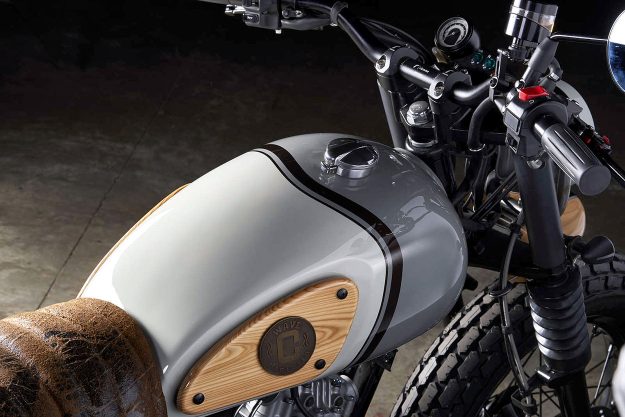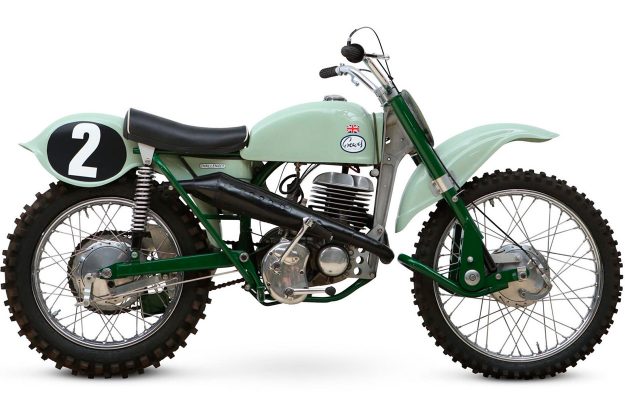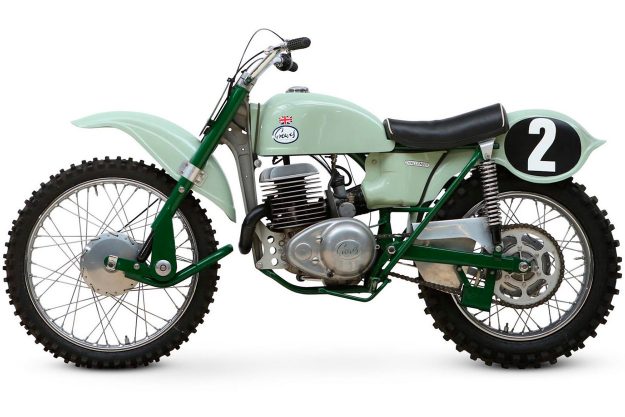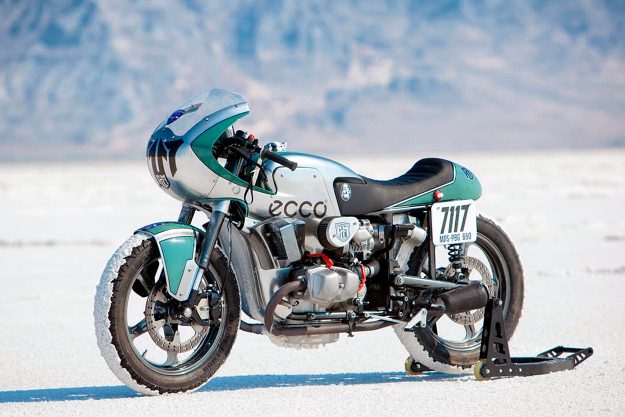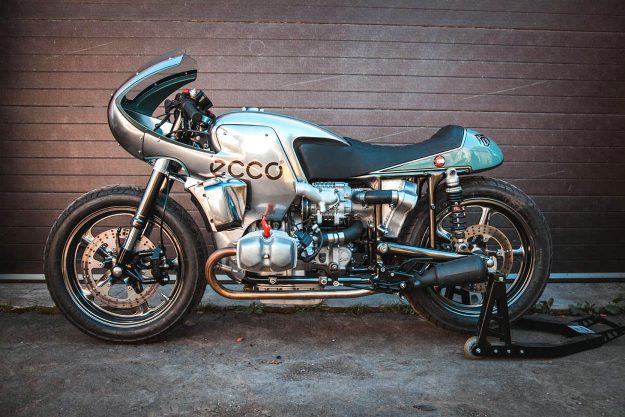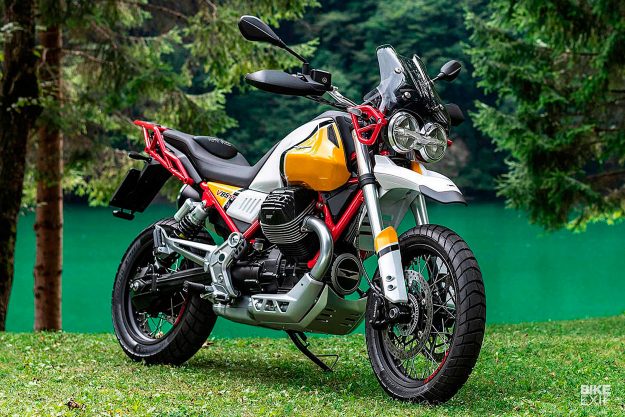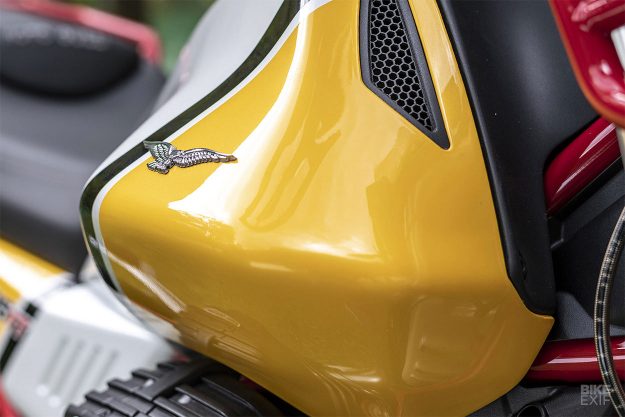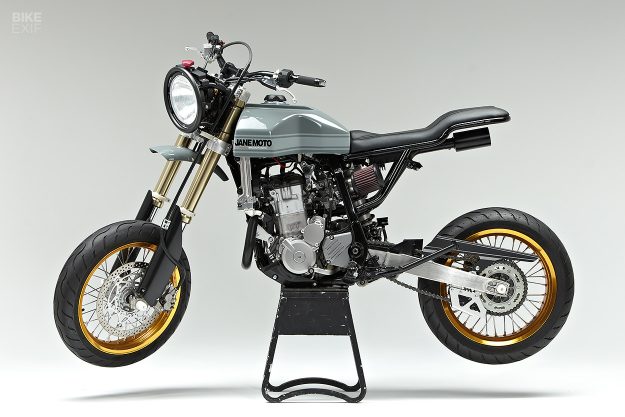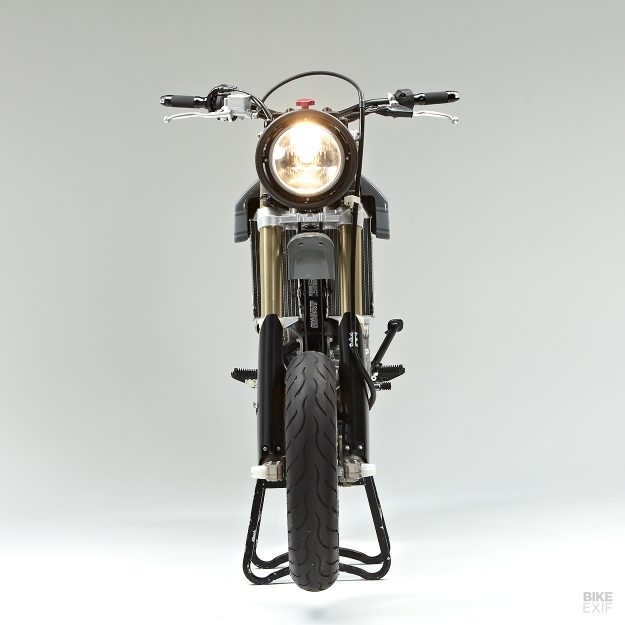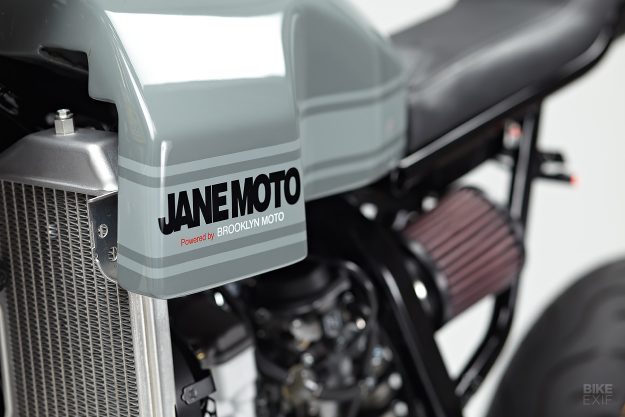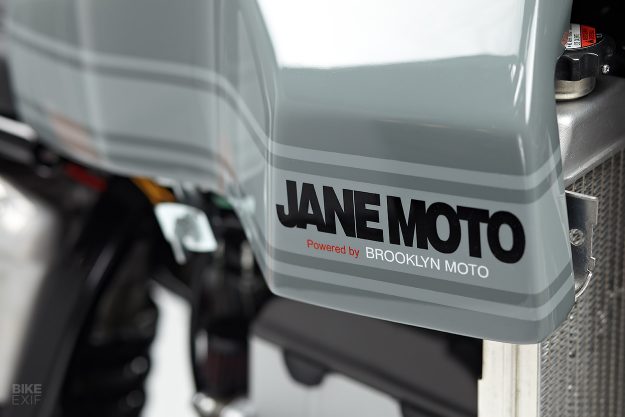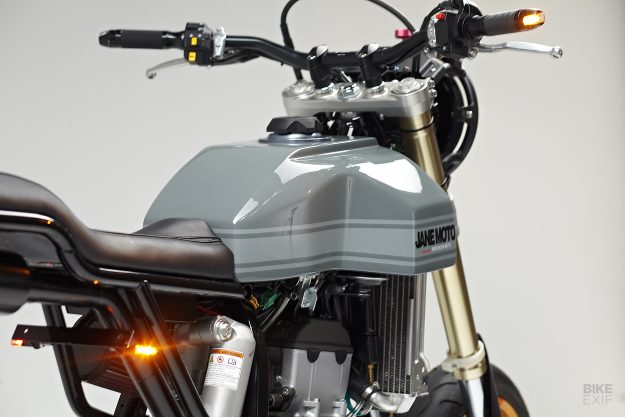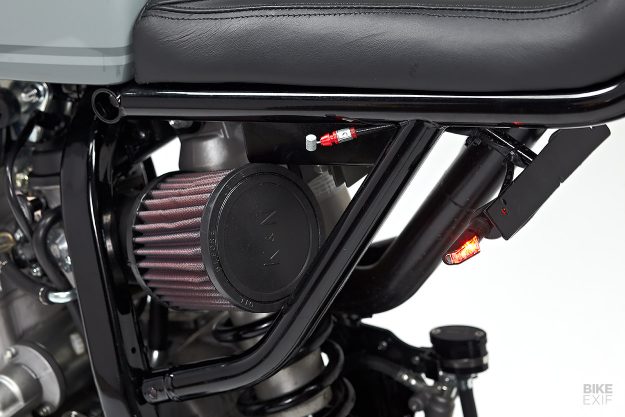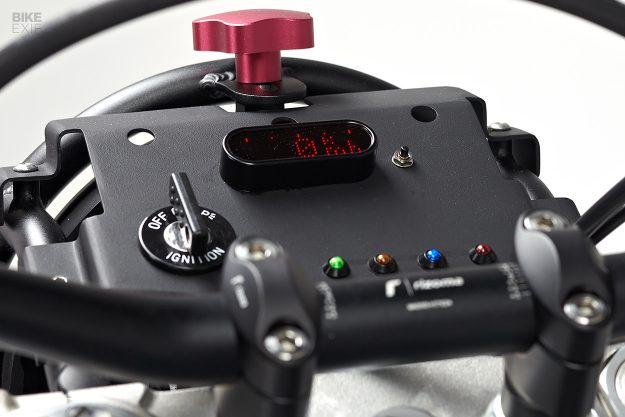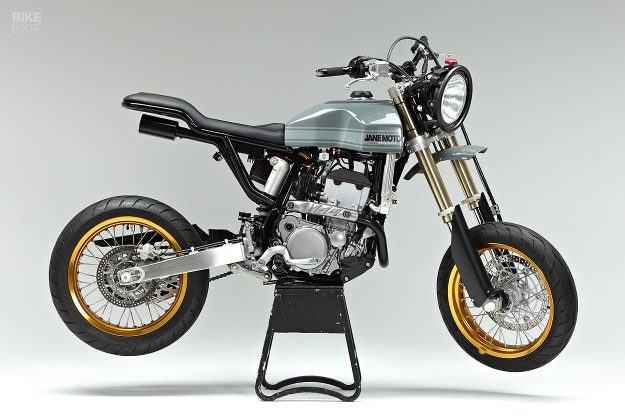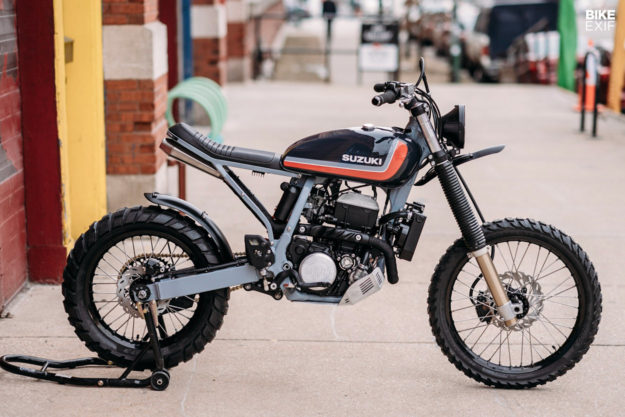
Federal Moto havethe Midas touch. The builds coming out of their Chicago workshop are sharp-edged, compact and big hits with our readers.
But sometimes, success can be a double-edged sword. After releasing ‘The Sunshine State of Mind’ SR500 in 2016, Federal were bombarded with requests for a replica build. “But there’s no fun in building the same bike twice,” says lead builder Mike Müller. “We love the support, but we also want our clients to have a one-of-a-kind bike.”
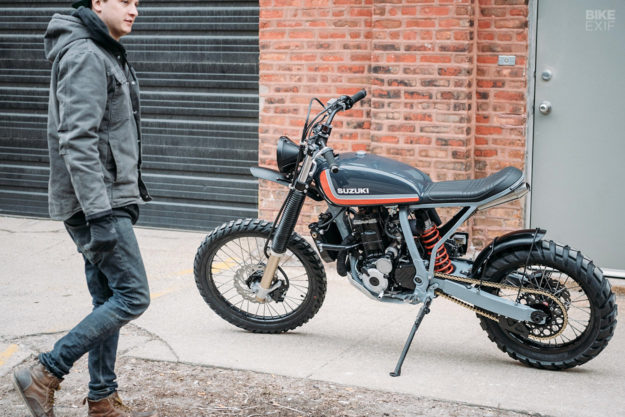
So Federal generally suggest to their clients that they build another one-of-a-kind bike. “Just as thumpy, just as wheelie-enabled, and just as awesome!”
That’s what happened with ‘Big Suzie,’ a DR-Z400 commissioned by a local Chicago-based client. “He’s a father of two, a businessman and city livin’,” says Mike. “He grew up on Honda CRs, Suzuki RMs and Yamaha YZs in the early 90s.”
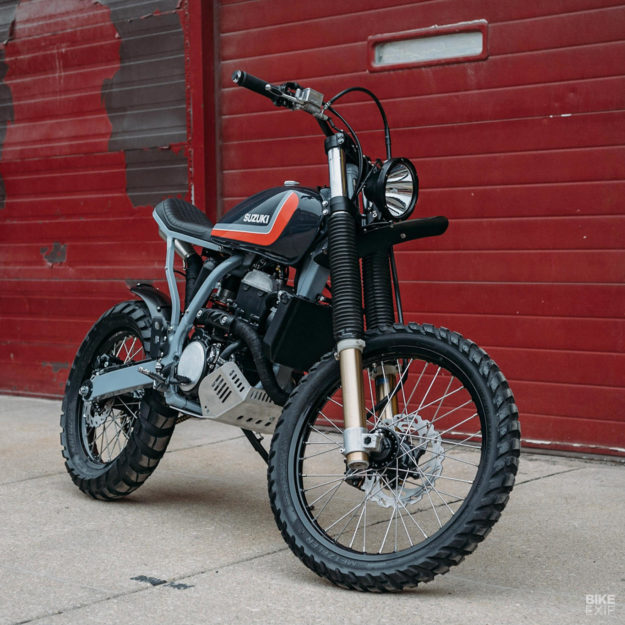
Federal’s client wanted a dependable city thumper with the Federal touch: a bike that he could take for an occasional romp if the setting was right.
The Müllers knew right away what bike to use: the tried-and-tested DR-Z400 platform, launched at the turn of the century. As a major bonus, the street-legal DR-Z400S variant has electric start—a must-have upgrade from the SR500 platform used for ‘Sunshine.’
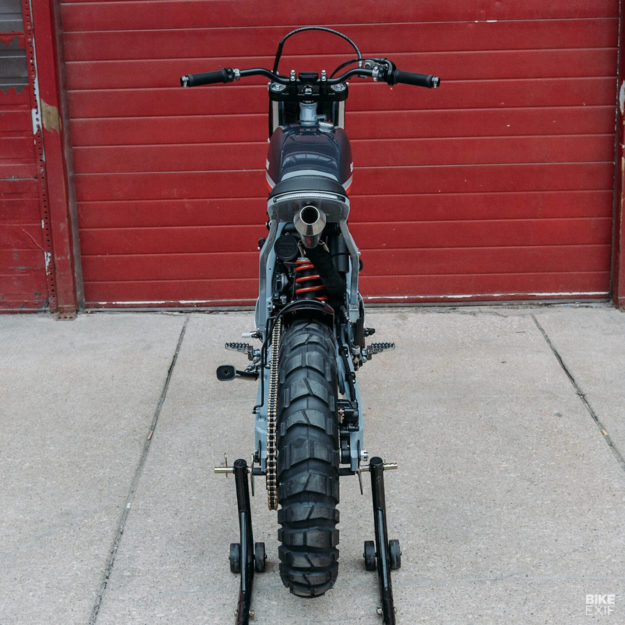
The slim Suzuki also has CDI ignition, a 21-inch front wheel, and good Showa suspension: 49mm adjustable forks, and a shock adjustable for high- and low-speed compression, as well as rebound damping.
With agreement on the 2005-spec donor bike, Federal whipped out the grinders. “We made a new subframe out of 7/8” square steel to match the OEM main frame,” says Mike. “Importantly, this uses the OEM bolt-on points for mounting—and may be a future Federal product. We integrated a LED taillight into the subframe as well.”
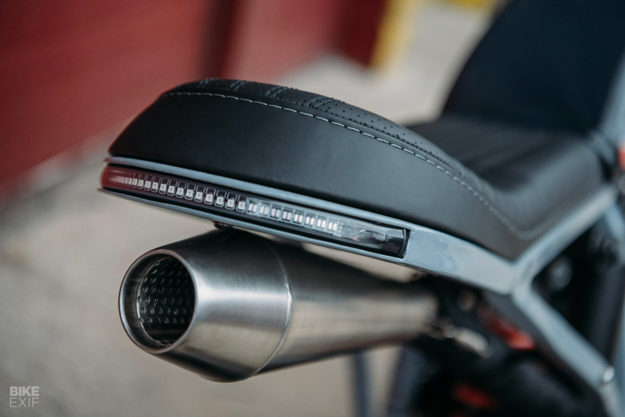
Then Federal ditched the clunky plastic OEM tank and mated an SR500 tank to the frame. “Like the DRZ, the SR500 also has oil in the upper neck of the frame,” Mike reveals. “So the tunnel was wide enough to fit, and the lines were perfect with the stance we were going for.”
The crisp tank design comes from art director Chris Paluch, with paint applied by Peter Gamen of KandyVan. It’s a colossal improvement on the garish yellow usually seen on DR-Z400s. As is the neat, minimalist seat pad—upholstered by Dane Utech.
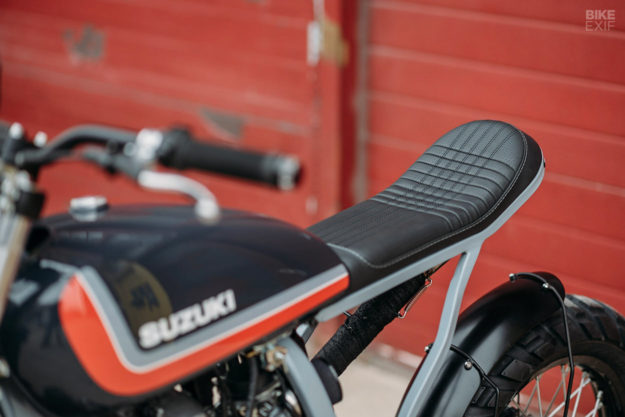
But after fitting the SR500 tank, it turned out that there wasn’t enough clearance for the OEM radiator and the front wheel. So Federal sourced a Honda VFR400 radiator, and plumbed it in with HPS high temperature silicone hoses.
After a little modification and some custom brackets, they got enough safe clearance for the front tire to make it work.
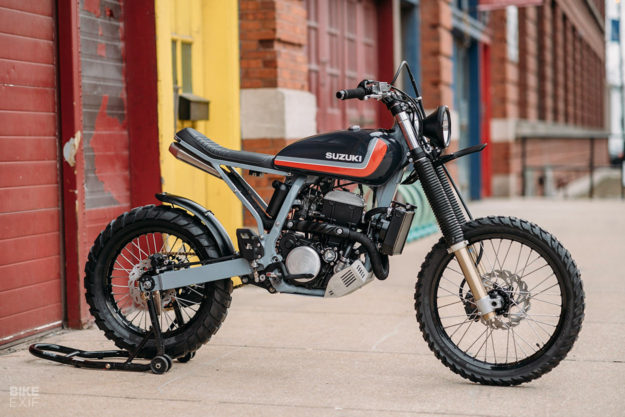
The bars are Renthal’s 7/8 Road Ultra Low bend, fitted with Biltwell Kung Fu grips plus a compact gauge, switchgear and bar-end blinkers from Motogadget. Renthal also supplied the 49T Ultralight rear drive sprocket and matching gold R1 MX Works chain.
The quick-adjust clutch and brake lever are from MSR, and a Hella lamp now lights the way.
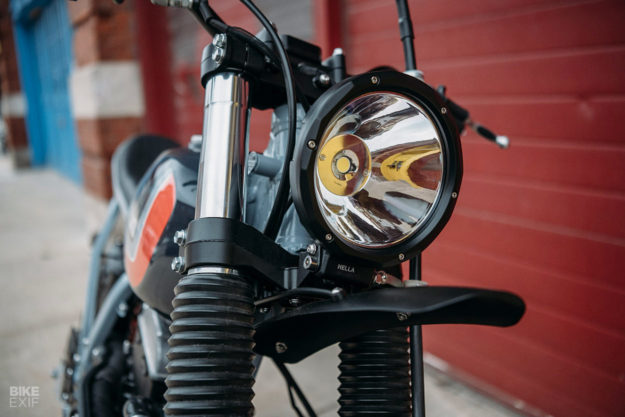
There’s quality everywhere you look on this DRZ400. The suspension front and rear has been completely rebuilt and the brake rotors are new, upgraded items. The fenders are custom-made from 3003 aluminum alloy, and hand-rolled with custom brackets. The entire frame is powder coated.
The wheels are powder coated too, and have been re-laced with stainless steel spokes. They’re now shod with Metzeler’s highly regarded Karoo 3 dual sport rubber.
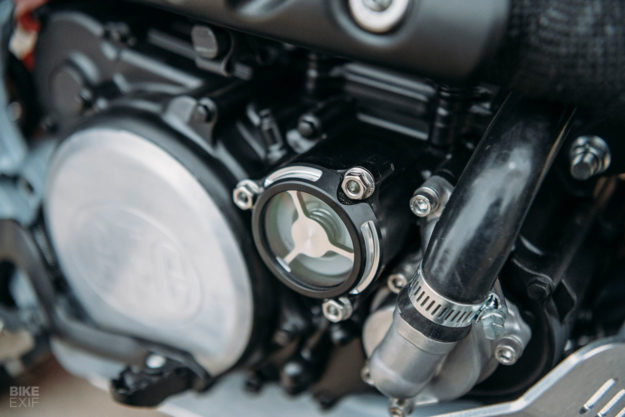
Even the motor looks better than new, with a mix of polished and ceramic-coated surfaces protected by a Devol Engineering aluminum skid plate. There’s a high-flow Uni Filter at the intake end, and a custom exhaust routed to follow the subframe geometry. (It exits through a 12-inch stainless steel Cone Engineering muffler.)
Federal have hidden most of the electronics under the tank, including a Motogadget m.unit Blue control box. It’s fed by Antigravity’s smallest and most powerful lithium battery, the SC-1.
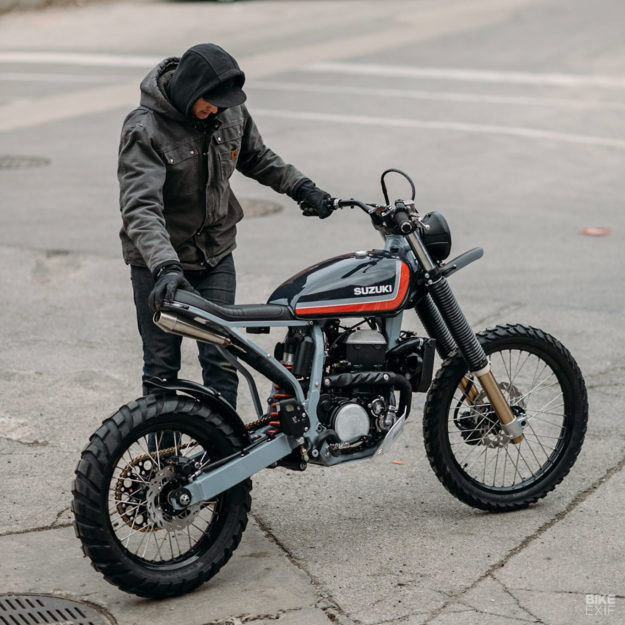
“I have to say, this hooligan, thumper style of build is my favorite to do,” says Mike. “It’s a kinda Federal staple. Maybe one day I can keep one for myself.”
We wouldn’t mind one ourselves, either. Older DRZ400s are cheap and easily located, and if looked after, will keep going forever—on both city streets and fire trails. Maybe this is the perfect ‘real world’ custom build?
Federal Moto | Facebook | Instagram | images by Grant Schwingle
